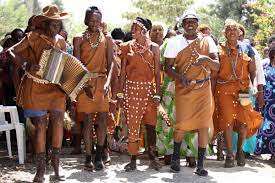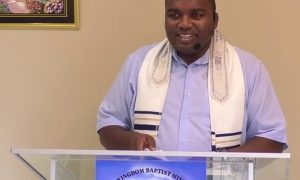The debate about the most educated tribes in Kenya has been going on for some time now.
According to estimates from the Kenya National Bureau of Statistics (KNBS), there are about 1 million public servants working for the Kenyan government.
It’s interesting to note that 6 tribes out of 43 hold 77% of public service jobs. Thus, it means the rest of the tribes have to fight over the remaining 23%.
Nevertheless, these figures also suggest which tribes in Kenya have the highest levels of education.
We all know that early contact with European missionaries helped some communities in Kenya get a jump start in their educational endeavours.
Employment in the government
On average, there are about 1 million people who work in the public service.
The Kikuyu, Luhya, Kalenjin, Kamba, Luo, and Kisii are the six tribes that occupy the majority of the available slots.
Smaller communities like the Embu, Mijikenda, and Maasai have also found ways to gain access to the government.
These findings certainly seem surprising. This article will provide some crucial information on the Kenyan tribes with the highest levels of education.
Here is a list of the top 10 most educated tribes in Kenya, starting with the best tribe and ending with the least:
Kikuyu
The Kikuyu tribe, which has more than 130 professors and over 5,000 Ph.D. holders, is currently at the top of the list. This tribe embraced western education early and has a reputation for enrolling in the most marketable courses.
In fact, the joke in Kenya goes, “Before enrolling in any course, find out if there are any Kikuyu taking it.”
Kikuyus dominate the fields of law, business, media, and communication. Additionally, there are a sizable number in both medicine and mathematics. Kikuyus are notorious for being extremely assertive and for accepting humble beginnings before working their way up.
Who are the Kikuyu, though? Kikuyu, also spelled Agikuyu or Gikuyu, are a Bantu-speaking ethnic group that can be found in the highlands of south-central Kenya, near Mount Kenya.
Kikuyu are the largest ethnic group in Kenya, with around 22% of the total population.
They successfully secured the highest positions in government early enough to become the political and economic elite of independent Kenya.
Jomo Kenyatta, their son, served as Kenya’s first prime minister and then president. Additionally, Dr. Julius Gikonyo Kiano, the first Kenyan to earn a PhD, hails from the community.

The Agikuyu top the list of the most educated tribes in Kenya. Photo/courtesy
Luo
Second place goes to the Luo, who have been Kikuyu rivals since independence. The Luo are the fourth-largest tribe by population. They have so far been successful in excelling in some of the greatest professions, demonstrating their educational brilliance. The number of academics and degree holders in this Nilotic community is quite significant.
The Luo community has historically produced a large number of academics and other educated individuals, with some of them earning degrees from esteemed institutions like Harvard. As a result, Luo professionals, who work as engineers, lawyers, professors, and doctors, also predominate in almost all sectors of Kenya’s economy, government, and business.
Kalenjin
Nandi is the largest of the 10 subgroups that make up the Kalenjin, a Nilotic community.
The Kalenjin are the third-largest ethnic group in Kenya, after the Kikuyu and Luhya. The Nandi, Kipsigis, Keiyo, Tugen, Pokot, Marakwet, Terik, and Sabaot make up the ethnic group known as the Kalenjin. The Kalenjin boasts a huge number of engineers and tech experts working in Kenya and abroad.
Luhya
The Luhya, also known as Abaluhya, are a Bantu tribe that lives in the fertile western region of Kenya. They are neighbours to multiple Nilotic tribes like the Kalenjin, Luo, Teso (Iteso), and Maasai. They make up about 14% of Kenya’s population and are the second-largest ethnic group after the Kikuyus.
This tribe comprises 18 subtribes, each of which speaks a distinctive dialect of the Luhya language.
The Bukusu and Maragoli are the two biggest sub-tribes. Tiriki, Banyore, Banyala, Isukha, Gisu, Wanga, Batsotso, Samia, Kisa, Marama, Marachi, Masaaba, Idakho, Tachoni, Khayo, and Kabras are other subtribes.
Widely regarded as Kenya’s most emotionally intelligent tribe, the Luhya excel in fields including law, communication, teaching, and medicine.
Kisii
The Kisii tribe, also known as the Gusii, inhabits the Kisii highlands in Nyanza, Kenya. The community resides in an agricultural area with exceptionally fertile soil that is frequently wet all year. As a result, the Kisii tribe has become one of Kenya’s most prosperous tribes and has been able to educate its members. Kisiis are hailed for their industry and a keen eye for business opportunities.
Kamba
The semi-arid Eastern Province is home to the Akamba, a Bantu ethnic group. Kamba account for approximately 11% of Kenya’s total population, making them the fifth-largest tribe in the country. Kambas are known for their hard work, academic excellence, and loyalty.
Meru&Embu
The Meru tribe is the other tribe that has cemented its place on this list by producing several of Kenya’s best academics. They belong to the Bantu ethnicity and are closely related to the Embu and Agikuyu. Seven sub-tribes make up this community: the Imenti, Tigania, Igoji, Miutuni, Igembe, Muthambi, and Mwimbi. They live there, along with Chuka and Tharaka, in the Meru region.
The Meru got an educational headstart thanks to the numerous Christian mission schools that gave them a solid educational foundation. The Methodist, Presbyterian, and Catholic churches that had initially settled in the area founded the majority of their educational institutions.
The Embu are also known to be aggressive, hardworking, and to excel in education.
Maasai
The Maasai, who are regarded as Kenya’s most culturally conscious tribe, have made some strides in the area of education. This tribe’s long-preserved culture contributes to its popularity. This ethnic group has maintained its heritage and practices despite civilization, education, and western cultural influences, making them the embodiment of Kenyan culture.
They converse in Maa, a Nilotic tongue that emerged in the Nile basin of North Africa.
Taitas
The Taita people are Bantus who reside in Kenya’s southwest, close to the Tanzanian border, in the Taita Hills. The Wataveta, Wadawida, and Wasaghala subtribes make up this tribe. Taitas are arguably the most daring of the communities from the former Coastal Province. The latter trait has helped them acquire education and press for their fair share in government.
Mijikenda
The Mijikenda are the last tribe on this list of the most educated tribes in Kenya. They live along the Kenyan coast. The nine sub-tribes of the Mijikenda include Duruma, Chonyi, Kauma, Rabai, Ribe, Jibana, Kambe, Digo, and Giriama. The Mijikenda are pressing on matters of education, and they do have a tiny percentage of Ph.D. holders.
READ ALSO: Are These the 10 Richest Tribes in Kenya?
Conclusion
In the current workplace environment, educated people typically tend to get more promotions than the uneducated. However, skill-based professions are on the rise and will present excellent prospects to more Kenyans, not just the most educated tribes in Kenya.
PAY ATTENTION: Help us continue to bring you more educational and entertaining content. Click this link to join our membership. You can cancel or pause anytime.

















